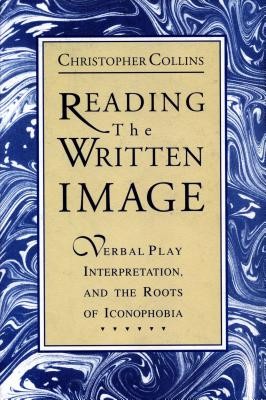
- We will send in 10–14 business days.
- Author: Christopher Collins
- Publisher: Penn State University Press
- ISBN-10: 0271028424
- ISBN-13: 9780271028422
- Format: 15.2 x 22.9 x 1.2 cm, minkšti viršeliai
- Language: English
- SAVE -10% with code: EXTRA
Reviews
Description
Reading the Written Image is a study of the imagination as it is prompted by the verbal cues of literature. Since every literary image is also a mental image, a representation of an absent entity, Collins contends that imagination is a poiesis, a making-up, an act of play for both author and reader. The "willing suspension of disbelief," which Coleridge said "constitutes poetic faith," therefore empowers and directs the reader to construct an imagined world in which particular hypotheses are proposed and demonstrated.
Although the imagination as a central concept in poetics emerges into critical debate only in the eighteenth century, it has been a crucial issue for over two millennia in religious, philosophical, and political discourse. The two recognized alternative methodologies in the study of literature, the poetic and the hermeneutic, are opposed on the issue of the written image: poets and readers feel free to imagine, while hermeneuts feel obliged to specify the meanings of images and, failing that, to minimize the importance of imagery. Recognizing this problem, Collins proposes that reading written texts be regarded as a performance, a unique kind of play that transposes what had once been an oral-dramatic situation onto an inner, imaginary stage. He applies models drawn from the psychology of play to support his theory that reader response is essentially a poietic response to a rule-governed set of ludic cues.
EXTRA 10 % discount with code: EXTRA
The promotion ends in 22d.18:56:53
The discount code is valid when purchasing from 10 €. Discounts do not stack.
- Author: Christopher Collins
- Publisher: Penn State University Press
- ISBN-10: 0271028424
- ISBN-13: 9780271028422
- Format: 15.2 x 22.9 x 1.2 cm, minkšti viršeliai
- Language: English English
Reading the Written Image is a study of the imagination as it is prompted by the verbal cues of literature. Since every literary image is also a mental image, a representation of an absent entity, Collins contends that imagination is a poiesis, a making-up, an act of play for both author and reader. The "willing suspension of disbelief," which Coleridge said "constitutes poetic faith," therefore empowers and directs the reader to construct an imagined world in which particular hypotheses are proposed and demonstrated.
Although the imagination as a central concept in poetics emerges into critical debate only in the eighteenth century, it has been a crucial issue for over two millennia in religious, philosophical, and political discourse. The two recognized alternative methodologies in the study of literature, the poetic and the hermeneutic, are opposed on the issue of the written image: poets and readers feel free to imagine, while hermeneuts feel obliged to specify the meanings of images and, failing that, to minimize the importance of imagery. Recognizing this problem, Collins proposes that reading written texts be regarded as a performance, a unique kind of play that transposes what had once been an oral-dramatic situation onto an inner, imaginary stage. He applies models drawn from the psychology of play to support his theory that reader response is essentially a poietic response to a rule-governed set of ludic cues.


Reviews